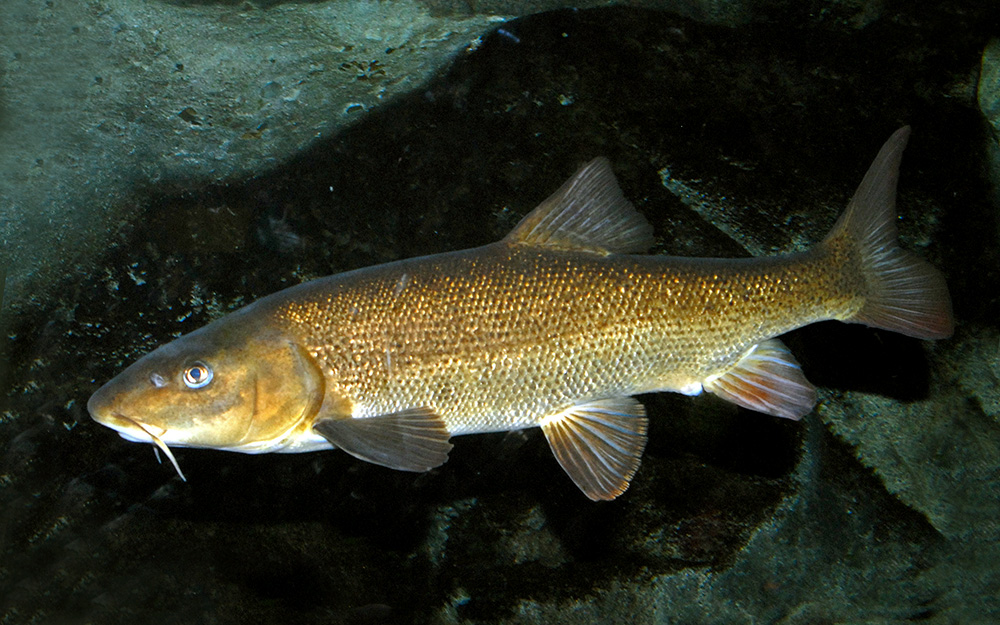Italian barbel
(Barbus plebejus)

Classification
Geographic Distribution
The range of distribution of Barbus plebejus is restricted to the Po river basin (including the southern part of Switzerland), all river basins in northern Italy, the Soca (Isonzo) river basin (Slovenia-Italy), Reba basin, the Dragonia river, and in Croatian rivers as far as Krka river. It also occurs in lakes. The southern boundary on the Adriatic coast of Italy can not be established with certainty, because this species is one of those most subject to sowing and introductions. Tuscany and Lazio in the district, especially in the basins of the rivers Arno, Ombrone, the Tevere and is certain his presence in the past.
Habitat
The barbel is a long-lived reofilo species that inhabits running waters of the hill and lowland zones of rivers (Huet, 1949, Baras and Cherry, 1990), although it is characterized by discrete ecological valence: it is, therefore, able to occupy various stretches of a river, however, preferring gravel or sandy substrate and rivers with moderately deep, well-oxygenated flowing water on foothill regions.
The flow rate of the river body is directly proportional to the larvae drifting downstream (Copp et al., 2002): this phenomenon ensures the dispersal of populations to the valley, maximizing the fitness (Jonsson, 1991; Copp et al., 2002). The presence of gravelly substrate is important for reproduction. The specimens of larger size are used to colonize areas downstream of the spawning beds, showing the ability to tolerate certain turbidity of the water and live well even in environments with a moderate speeds of the water. Populations of small claims are also present in oligotrophic lakes.
Biology
The barbel is a gregarious fish, size medium-large who live in small groups, preferably in the sections where the water is deeper. It has benthic habits, especially for trophic reasons. The diet consists mainly of macro-invertebrates such as insect larvae and crustaceans, gastropods, and occasionally macrophytes.
Searches carried out on growth in the river Po have revealed that the LT to 1 year is 14-20 cm and 20-100 g of weight, to 3 is 32-34 cm and 450-500 g of weight, to 5 is 41-42cm and 950-1050 g and to 7 years (females only) reach 70 cm to about 3200 g.
Sexual maturity is reached at 2-3 years and 4-5 years in males and females. There is no obvious sexual dimorphism. The deposition is generally single event (Baras, 1993). Reproduction takes place when the water temperature reaches 16-17 ° C, and then between April and July depending on the location. During the breeding season the barbs back the waterways making real migration of tens of kilometers until you find areas with gravelly bottom current and lively: barbel show high fidelity to a breeding site over the years (Hancock et al. 1976; Baras, 1995b).
In the breeding season, males reach the spawning beds before females (Lucas and Batley, 1996), in order to maximize the number of fertilized females. The deposition tends to persist over time, the eggs are relatively large (2:37 to 1.95 mm) and preferentially laid on the gravel at different depths. The eggs hatch after 8 days at 16 ° C.











